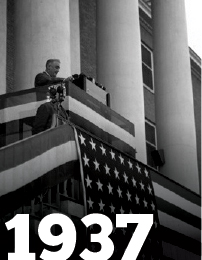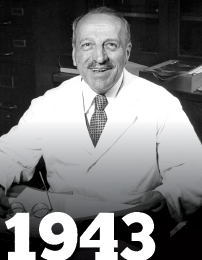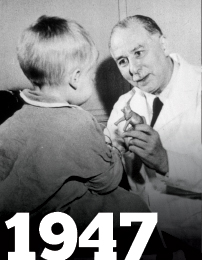In recognition of ASCO’s 50th Anniversary, The ASCO Post is publishing selected milestones as noted in the interactive timeline throughout 2014. To view the complete interactive timeline, please visit CancerProgress.Net.
1937 National Cancer Institute established
President Franklin D. Roosevelt signs legislation establishing the National Cancer Institute to support research on the causes, diagnosis, and treatment of cancer. The new agency’s 1938 budget is $400,000 (Fig. 1).
1943 Introduction of Pap test leads to dramatic declines in cervical cancer deaths
The Pap test, named for its inventor, George Papanicolaou, MD, PhD, enables doctors to detect and treat cervical cancers or precancers before they have a chance to spread. Since the 1950s, widespread use of the Pap test has helped to reduce U.S. cervical cancer death rates by nearly 70%. Yet cervical cancer remains a major cause of cancer death in developing countries, where access to screening and treatment is limited (Fig. 2).
1947 First-ever remission of pediatric leukemia
Sidney Farber, MD, a physician at Children’s Hospital Boston, achieves the first partial remission of pediatric leukemia in a 4-year-old girl using the drug aminopterin. He soon documents 10 cases of remission in a landmark scientific paper. Until this time, children with acute leukemia usually died within weeks of being diagnosed. While early remissions prove temporary, they pave the way for therapies that cure thousands of patients in the decades to come, allowing most childhood cancer patients to live long, healthy lives (Fig. 3).
Editor’s note: The ASCO Post invites readers to share your own recollections of clinical milestones and personal experiences in oncology over the past 50 years. Write to editor@ASCOPost.com. Photos encouraged in high-resolution jpg or tiff file. All correspondence will be acknowledged and will be considered for publication.




